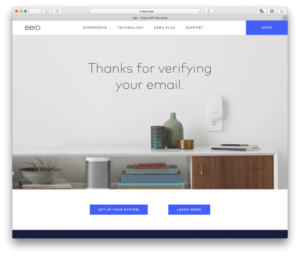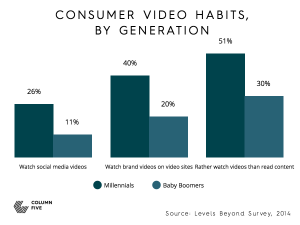— April 14, 2019
According to Forbes, there are over 2.5 quintillion bytes of data created every day. It’s impossible to wrap our head around the present-day figure, and it’s only getting larger by the month.
For product owners and marketers, data can be a good thing. It has helped them better understand their customers and create more engaging experiences that fuel retention and revenue. But as they’ve also learned, too much of a good thing can be bad. We’ve reached a tipping point where we’re drowning in data. These days, we are inundated with so much data it’s become impossible to identify what data is helpful and make good use of it.
At the same time, customers are demanding a more and more personalized experience. This presents a catch-22, where marketers need to use data to deliver the type of personalized experience our customers demand, yet they get bombarded with so much data it can be paralyzing. As a result, the customer experience is suffering at a time when their expectations have never been higher.
The solution to this conundrum is digital intelligence. Over the next few years, marketing platforms have to develop new tools and techniques that will make it easier for marketers and product owners to use data and deliver a personalized experience to every customer. Below, we’ll talk about some ways platforms will tackle making sense of our ever-expanding data challenge:
Automated Optimization Coming to a Campaign Near You
Let’s face it; the modern day user demands a personalized experience. And in order for your business to survive, you must be pretty damn good at delivering on it. This notion of personalization is not a new topic, we’ve been covering it on the blog for years.
Most marketers have figured out how to weave some level of personalization into their campaigns. But the reality is that it’s still fairly complex to move beyond superficial personalization (e.g. including profile information like a customer’s name or last item purchased in a message) to truly understanding the user and predicting their next move. That’s where digital intelligence comes in. We’re already seeing marketing platforms introduce some forms of automated optimization, but over the next few years we’ll see these algorithms get more accurate and comprehensive. In the near future, your marketing platform will be able to look at your users and your campaign objectives, then determine:
- Optimal audience
- Optimal content
- Optimal channel
- Optimal send time
What Automating The Campaign Optimization Process Looks Like
Not quite sure how some of this might work? Let’s look at a hypothetical example. Today, if a retailer wants to drive increased sales of a specific item, they have to make some educated guesses while building out a campaign to increase sales. They have to guess:
- Which customers will be interested in purchasing the product and should therefore be included in the Audience for this campaign
- What will be the most compelling message to send the target Audience
- What channel should be used to send the message
- What time they should send the message to maximize the likelihood that the Audience will see and respond to the campaign.
Although a savvy marketer can make some fairly educated guesses and even some data-driven decisions on these items if they do a bit of A/B testing, it’s a lot of work and nothing is tailored to each individual recipient. What’s more, this is just to promote one product! The retailer then has to repeat the process for each additional product they want to promote.
Contrast our retailer’s current experience with the one they’ll have in a few years. In that world, the retailer will simply tell their marketing platform which products they want to promote and they’re done. The platform will create an Audience for the campaign by examining users’ recent behavior combined with data from lookalike users to identify users who are highly likely to purchase the products being promoted.
The platform will then use data gathered from past campaigns along with automated A/B testing to determine the type of message(s) that should be sent. Of course, each message will be further tailored to the individual recipient based on their past behavior and personal preferences.
Finally, the platform will determine what message channel and send time will result in the highest likelihood that each recipient will open the message.
The end result for customers who receive this message is they get a far more personalized experience. For the retailer, they not only get a substantially more effective campaign, but they spend far less time building messages and instead can focus on the larger marketing strategy. It’s a win-win. Pretty cool, huh?
Final Thoughts
We have been told for years about how important it is to be data-driven and deliver a personalized experience to each customer. However, this is easier said than done. As marketers get bombarded with more data from more sources, it becomes harder and harder to follow these best practices. We’ve reached an inflection point and it’s now up to marketing platforms to develop new technology that will allow marketers to follow best practices, do their job as efficiently as possible and deliver an exceptional customer experience.
Digital & Social Articles on Business 2 Community
(31)






